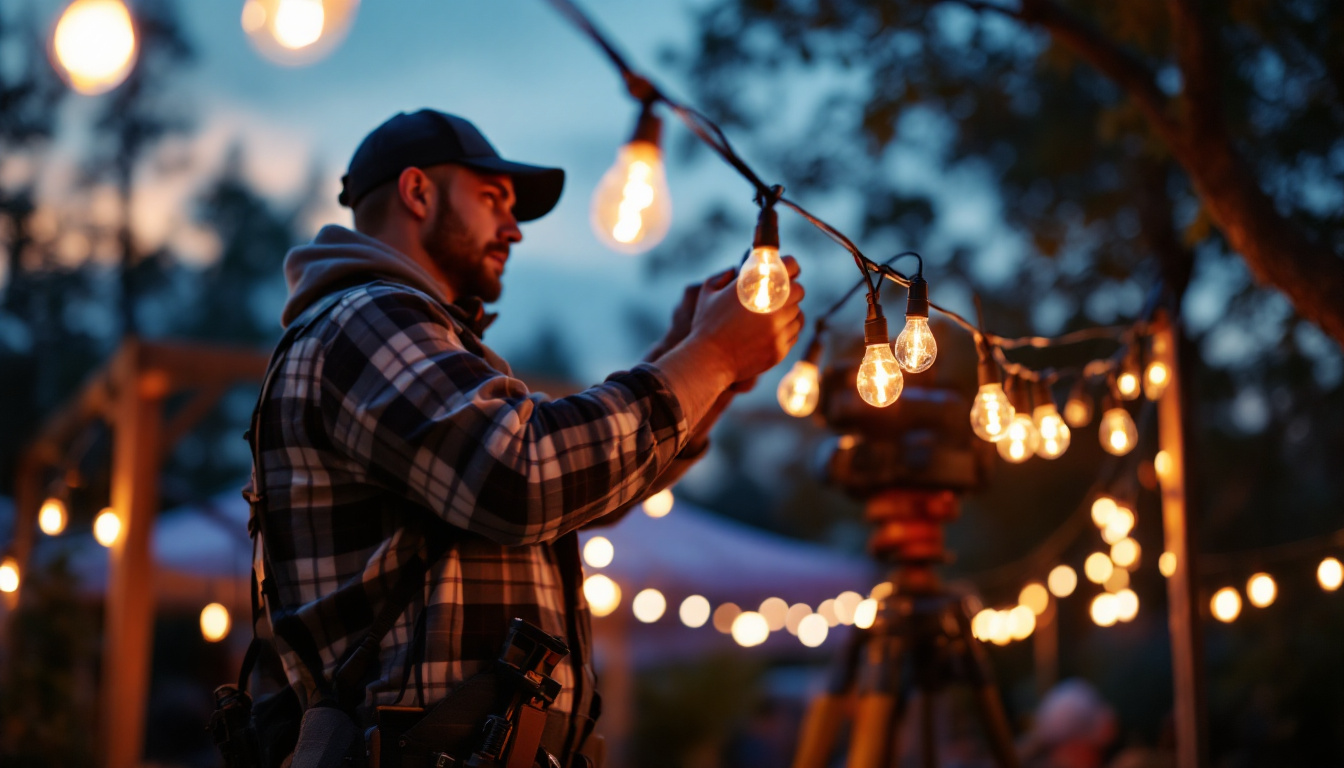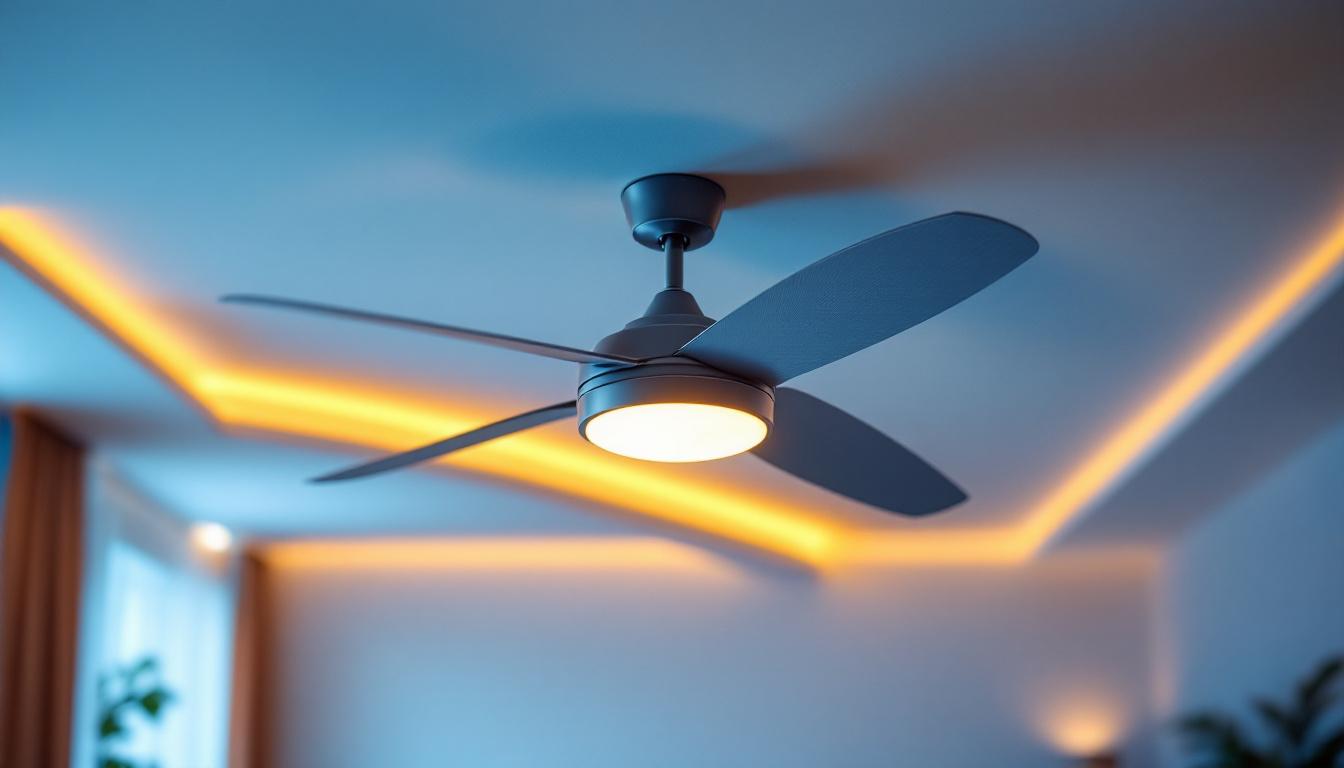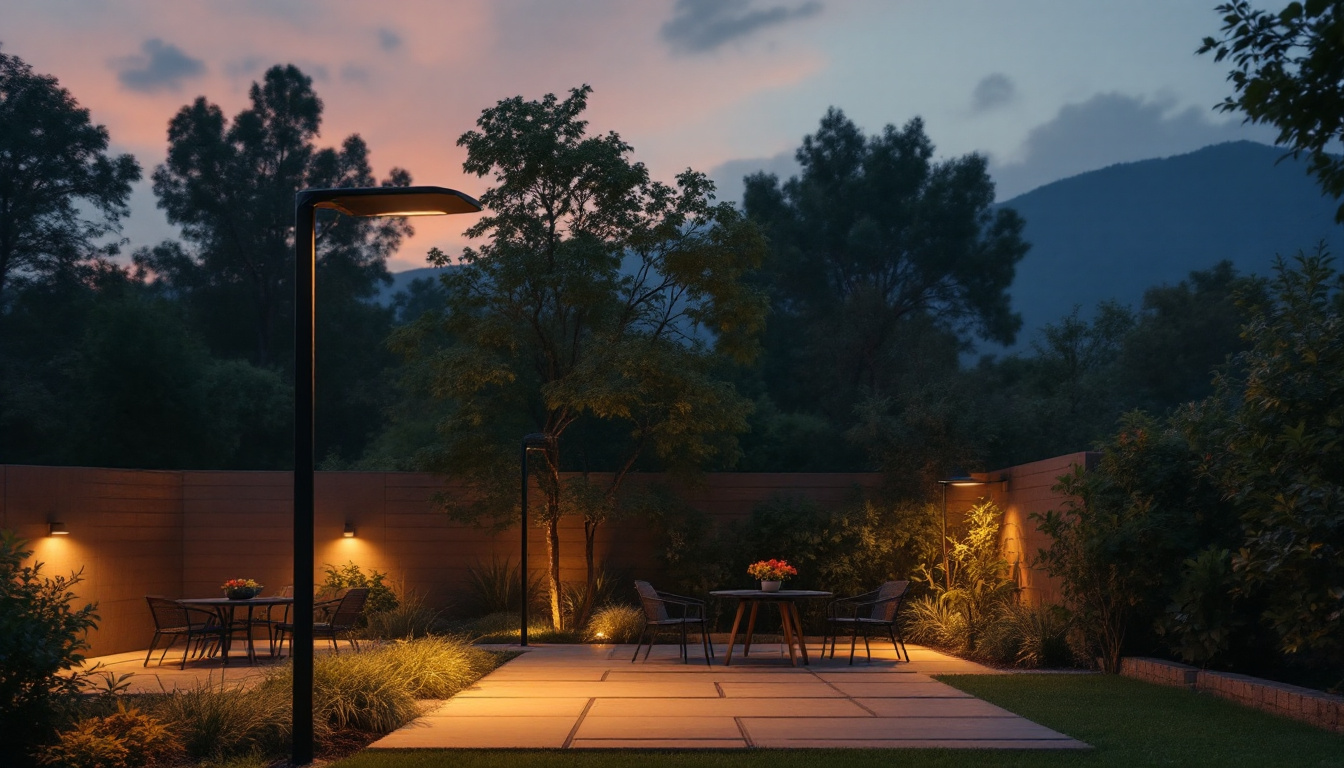
String construction lights are an essential tool for lighting contractors, providing flexibility and efficiency on job sites. These lights not only illuminate work areas but also enhance safety and productivity. This article offers valuable tips for lighting contractors to maximize the use of string construction lights, ensuring optimal performance and reliability.
String construction lights are designed to be portable and versatile, making them ideal for various construction and renovation projects. Typically, these lights consist of a series of bulbs connected by a durable cord, allowing for easy setup and movement. They can be used indoors and outdoors, providing illumination in areas where permanent lighting is not yet installed. The convenience of string lights means that workers can easily adjust their placement to focus light where it is most needed, enhancing safety and productivity on the job site.
Moreover, the ability to daisy-chain multiple sets of string lights together allows for extensive coverage in large areas, such as warehouses or outdoor job sites. This flexibility not only helps in illuminating dark corners but also creates a well-lit environment that can boost morale among workers. With the right setup, string construction lights can transform a dimly lit space into a bright and inviting work area, making it easier to see details and complete tasks efficiently.
There are several types of string construction lights available, each suited for different applications. The most common types include LED, incandescent, and fluorescent string lights. LED lights are increasingly popular due to their energy efficiency, long lifespan, and low heat output. They can last up to 50,000 hours, significantly reducing replacement costs over time. Incandescent lights, while less energy-efficient, offer a warm glow that some contractors prefer for specific tasks, particularly in settings where a softer light is beneficial for detailed work. Fluorescent lights provide bright, even illumination and are often used in larger spaces, but they may require more care in handling due to their fragility.
Additionally, some string lights come equipped with features such as dimming capabilities or adjustable brightness settings, allowing users to customize the lighting according to the task at hand. This adaptability can be particularly useful in environments where different levels of brightness are needed at various stages of a project. Furthermore, many modern string lights are designed with energy-saving technology, making them not only cost-effective but also environmentally friendly, appealing to contractors who prioritize sustainability in their operations.
When selecting string construction lights, several features should be considered to ensure they meet the demands of the job. Look for lights that are weather-resistant, especially if they will be used outdoors. Durability is also crucial; lights should be able to withstand the rigors of a construction site. Additionally, consider the length of the cord and the number of bulbs, as these factors will affect how much area can be illuminated. Some models even offer shatterproof bulbs, which can be a lifesaver in high-traffic areas where accidental impacts are likely.
Another important feature to consider is the ease of installation. Many string lights come with hooks or clips that allow for quick and secure mounting, saving valuable time during setup. Additionally, check for safety certifications, such as UL listing, which ensures that the lights meet rigorous safety standards. This is particularly important on construction sites where electrical safety is paramount. Finally, consider the power source; some string lights are battery-operated, providing even greater flexibility in locations where electrical outlets are scarce or unavailable.
Proper installation is vital for maximizing the effectiveness of string construction lights. A well-planned setup not only enhances visibility but also minimizes hazards on the job site.
Before installing string lights, take the time to plan the layout carefully. Assess the work area and identify key zones that require illumination. Consider the height at which the lights will be hung, ensuring they are high enough to avoid interference with ongoing work but low enough to provide adequate light. Additionally, take into account potential obstacles, such as scaffolding or machinery, that may obstruct light distribution.
Once the layout is planned, secure the lights properly to prevent accidents. Use hooks, clamps, or zip ties to attach the lights to stable structures. Ensure that the lights are not hanging too low, which could pose a safety risk. If using outdoor lights, make sure they are anchored to withstand wind and other environmental factors.
Safety should always be a top priority when using string construction lights. Proper precautions can prevent accidents and ensure a safe working environment for all personnel on site.
When working with electrical equipment, it is essential to follow safety guidelines. Ensure that all string lights are rated for the intended use and that they are plugged into properly grounded outlets. Avoid overloading circuits, as this can lead to overheating and potential fire hazards. Regularly inspect cords for damage or wear, and replace any faulty equipment immediately.
String lights can create trip hazards if not installed correctly. Keep cords neatly arranged and secured to the ground to prevent workers from tripping. Use cable covers or mats to protect cords running across walkways. Additionally, ensure that the lights themselves are positioned to provide maximum illumination without creating shadows or dark spots.
Regular maintenance of string construction lights is crucial for ensuring their longevity and effectiveness. A well-maintained lighting system can significantly improve job site safety and productivity.
Conduct regular inspections of string lights to identify any issues that may arise. Check for loose bulbs, frayed cords, or damaged connections. Address any problems immediately to prevent further damage and ensure that the lights remain operational. Keeping a maintenance log can help track inspections and repairs, making it easier to manage the lighting system.
Cleaning string lights is an often-overlooked aspect of maintenance. Dust and debris can accumulate on bulbs, reducing their brightness and effectiveness. Use a soft cloth to wipe down the bulbs and cords regularly. When the lights are not in use, store them in a dry, cool place to prevent damage from moisture or extreme temperatures. Proper storage can extend the life of the lights and ensure they are ready for the next job.
Incorporating technology into the use of string construction lights can significantly enhance efficiency and convenience on job sites. Smart lighting solutions are becoming increasingly popular among contractors.
Smart string lights can be controlled remotely, allowing contractors to adjust the lighting as needed without having to physically access the lights. This feature can be particularly useful in large work areas where multiple light setups are in use. Some smart lights also offer programmable settings, enabling contractors to set schedules for when the lights should be on or off, thus saving energy and reducing costs.
Energy efficiency is a significant concern for many contractors. Using LED string lights can drastically reduce energy consumption compared to traditional incandescent bulbs. Additionally, utilizing timers or motion sensors can further enhance energy efficiency by ensuring lights are only on when needed. This not only lowers energy bills but also contributes to a more sustainable work environment.
Accessorizing string construction lights can improve their functionality and adaptability on the job site. Selecting the right accessories can make a significant difference in how effectively the lights perform.
Having the right extension cords and adapters is essential for ensuring that string lights can be used in various locations. Choose heavy-duty extension cords that can handle the power requirements of the lights. Additionally, consider using adapters that allow for multiple string lights to be connected to a single power source, simplifying setup and reducing the need for multiple outlets.
Investing in quality mounting hardware can enhance the stability and safety of string lights. Various options are available, including hooks, clamps, and brackets, each designed for specific applications. Selecting the right mounting hardware ensures that lights are securely attached and positioned for optimal illumination.
String construction lights are versatile tools that can be used in various applications beyond standard construction sites. Understanding these applications can help contractors maximize their investment.
String lights are not only useful for construction but also for outdoor events and festivals. They can create an inviting atmosphere, enhancing the overall experience for attendees. Contractors can use string lights to illuminate pathways, tents, and seating areas, ensuring that guests feel safe and comfortable. Their portability makes them easy to set up and dismantle, making them ideal for temporary installations.
During home renovations, string construction lights can provide essential lighting for both contractors and homeowners. They can illuminate dark corners and work areas, ensuring that tasks are completed safely and efficiently. Additionally, using string lights can help create a welcoming environment for homeowners who may be living in the space during renovations.
String construction lights are invaluable tools for lighting contractors, offering flexibility, efficiency, and safety on job sites. By understanding the different types of lights, installation techniques, safety considerations, and maintenance practices, contractors can make the most of these lighting solutions. Incorporating technology and choosing the right accessories can further enhance their effectiveness, making string lights a reliable choice for various applications. With the right approach, string construction lights can illuminate work areas, boost productivity, and contribute to a safer working environment.
Ready to enhance your job sites with the best in string construction lighting? Look no further than LumenWholesale, where we provide contractors with superior, spec-grade lighting solutions at unbeatable wholesale prices. Say goodbye to local distributor markups and hello to our extensive selection that meets the highest industry standards. With LumenWholesale, you’re guaranteed reliable, high-performance lighting that elevates every project. Plus, enjoy the convenience of bulk buying with free shipping, ensuring you get premium lighting at the best value — without hidden fees. Elevate your lighting game and experience the perfect blend of quality, affordability, and convenience with LumenWholesale.

Illuminate your projects with confidence using our comprehensive guide on long outdoor lights.

Discover the essential insights and benefits of floodlights for lighting contractors.

Discover the top strategies lighting contractors use when installing extra large ceiling fans with integrated lights.

Discover how Post Light Solar is transforming the lighting industry by maximizing profitability through innovative solar solutions.